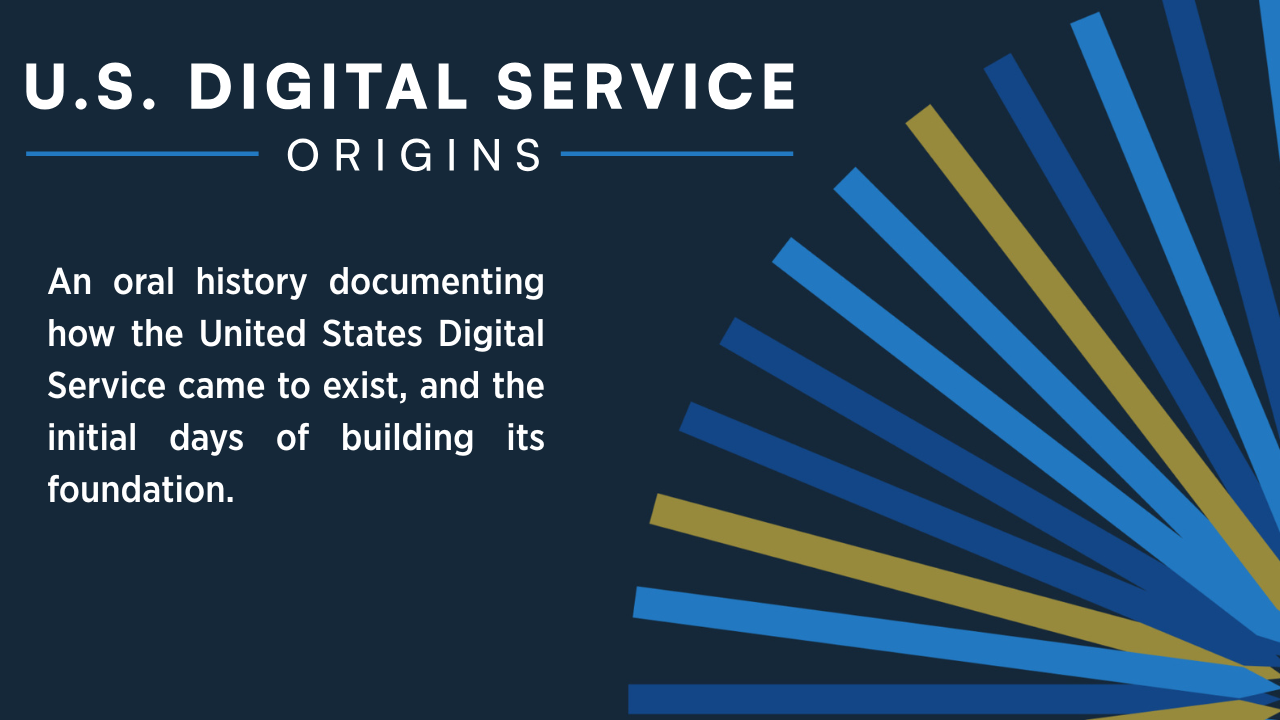Ask someone how the United States Digital Service (USDS) began, and chances are you’ll hear about the healthcare.gov crisis of 2013. But the true story of this agency, which worked from the inside to make technology work better within and for government and the people it serves, is more nuanced and expansive. U.S. Digital Service Origins, a new oral history project by USDS founding members Emily Tavoulareas and HKS Lecturer and Shorenstein Center fellow Kathy Pham, brings this layered history into focus with interviews with many of the key figures in the founding of the USDS.
Key Insights
The USDS, formally launched in 2014, is often linked to a single episode of government failure and rescue. Yet, as the website’s interviews with over 40 founders, early leaders, and agency innovators reveal, the service was born from a broader movement to use technology to modernize and improve government’s efficiency and effectiveness.
Drawing on its deep bank of oral histories, USDS Origins distills several important insights, including:
- Building a Movement: The USDS was born from years of groundwork before the healthcare.gov crisis, and developing an ecosystem of teams and units working on technology across the federal government led to lasting transformation.
- Valuing Expertise and Collaboration: Trust, collaboration, and relationship-building were core early and persistent values of the USDS. Change depended on bringing together technologists, policy experts, and frontline civil servants to identify problems and design solutions.
- Prioritizing Results: The service was not focused on technology alone, but rather saw technology as a tool to improve the effectiveness and efficiency of the often-invisible work of government operations. One of its core values was “optimize for results, not optics.”
In addition to insights, the curators also created a chronology of events, and a single-scroll page of key quotes that together provide a sense of the experience itself.
USDS Origins curators Kathy Pham and Emily Tavoulareas spent six years preserving the lessons learned by their colleagues and peers. They recognized that the ways new things are built within government are often lost in the churn of time and the necessity of getting the next things done, but that the nuances of how the USDS was formed held important lessons for others who want to innovate within governments. As this history shows, true reform that improves government and its services can be driven by a combination of collaboration, building trusted relationships, and supporting a culture of iterative, people-centered innovation.
US Digital Service Origins can be used as a resource for researchers, historians, students, and those working to modernize public service in governments around the world. For anyone seeking to understand or replicate real, lasting change, these first-person stories offer both caution and hope—reminding us that durable progress is collective, persistent, and deeply human.


